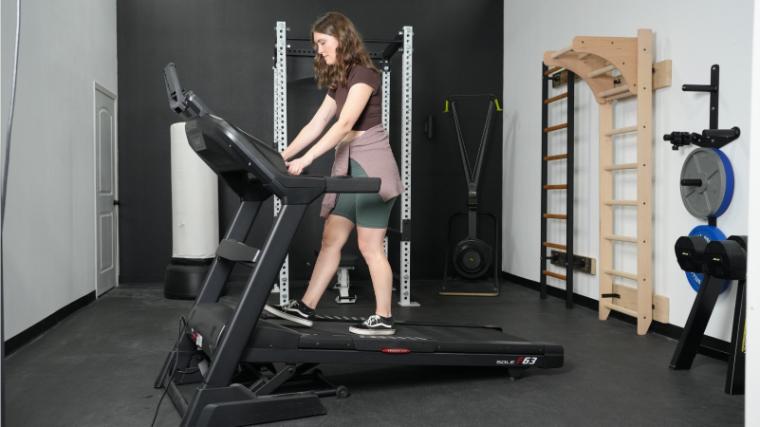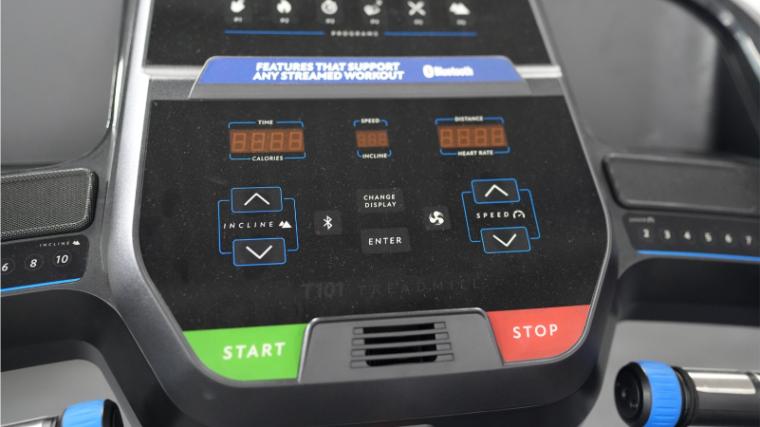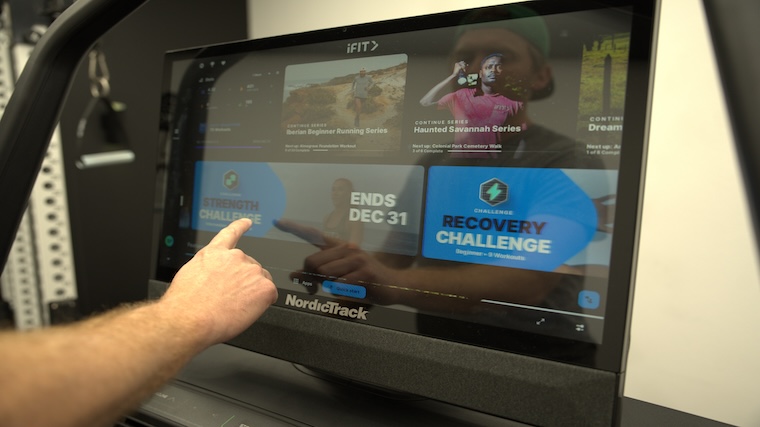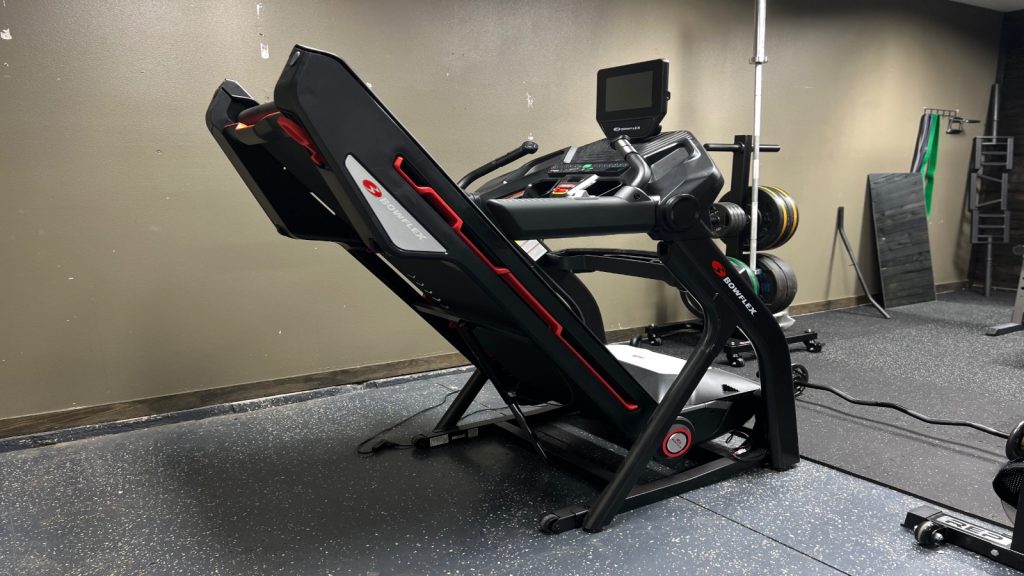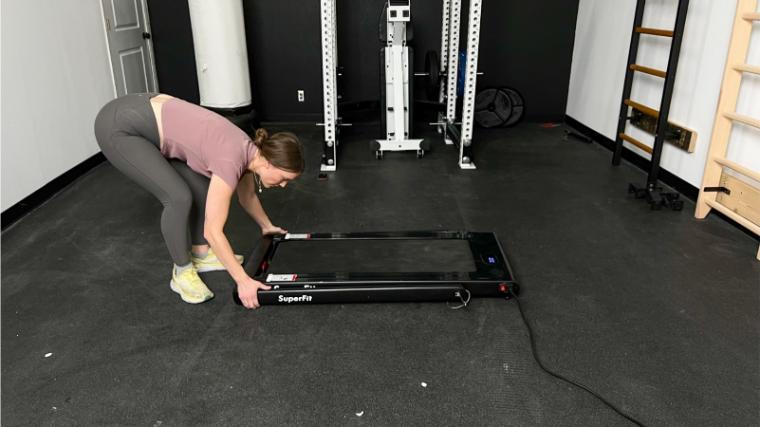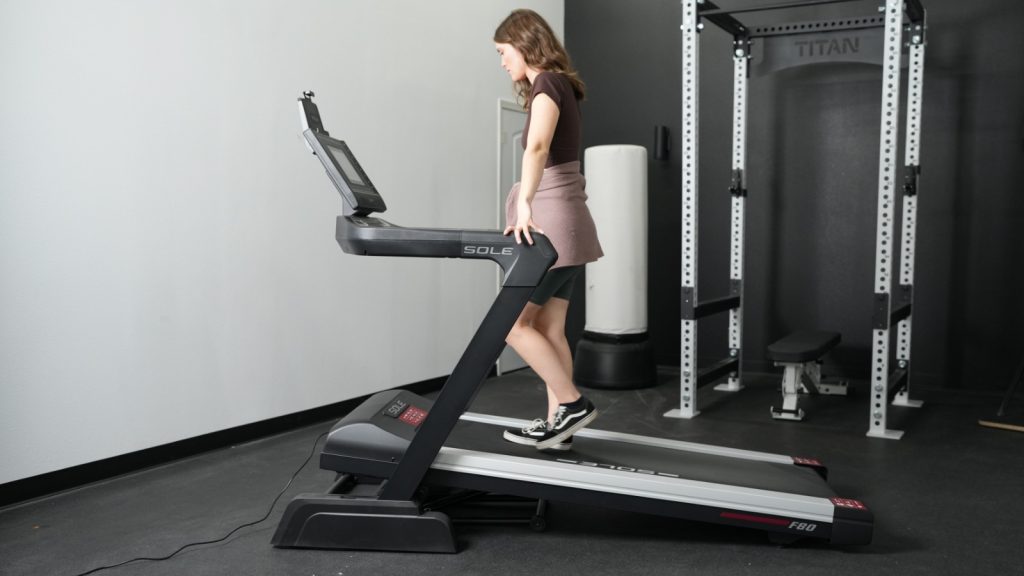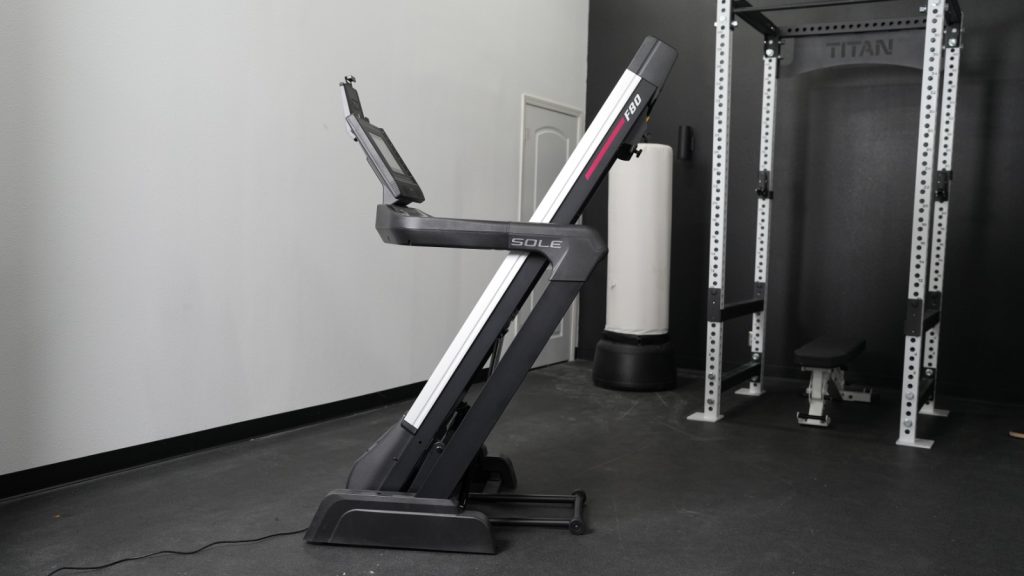When conjuring up thoughts of the best cardio machines, treadmills typically cross your mind first. From compact treadmills ideal for apartment-dwelling athletes to high-end profiles that fit in across home gyms and commercial settings alike, the best treadmills can be excellent additions to your personal training environment.
Of course, though, today’s treadmill landscape can make finding your ideal silhouette for home use a bit of a burden. Factors like available settings, programming options, durability, and (of course) price play a role when finalizing your cart. To lend a helping hand, we’ve tested over 40 different treads and consulted with our team of fitness experts to compile this guide to the best treadmills available today.
The 11 Best Treadmills for Your Home Gym (2025)
- Best Treadmill Overall: Horizon 7.0 AT
- Best for Streaming: NordicTrack Commercial 1750
- Best Folding Treadmill: Sole F63
- Best Budget Treadmill: Horizon T101
- Best Incline Treadmill: NordicTrack X24
- Best Manual Treadmill: TrueForm Trainer Curved Treadmill
- Most Durable Treadmill: BowFlex Treadmill 10
- Best Treadmill for Small Spaces: GoPlus 2 in 1 Folding Treadmill
- Best Treadmill for Running: ProForm Carbon Pro 9000
- Best Cushioned Treadmill: Sole F80
- Best Treadmill for Walking: Sunny Health & Fitness SF-T4400
Best Treadmills Video Review
In the video below, BarBend expert tester Jake Herod, NASM-CNC, walks you through some of the best treadmills on the market in 2025 from brands like NordicTrack, Sole, Horizon, and Assault Fitness.
Best Treadmill Overall: Horizon 7.0 AT

The Horizon 7.0 AT Treadmill is a durable, low-cost option for anyone looking for a quality treadmill without overspending. It features a strong motor, a wide range of speed and incline settings, and a unique three-zone cushion system.
Specs
- Price: $2,100
- Incline Range: 0-15%
- Max Speed: 12mph
- Motor Size: 500lb Thrust Incline Motor
- Weight Capacity: 325lbs
- Product Dimensions: 76″ L x 35″ W x 67″ H
- Display Size: 7.25”
- Warranty: Lifetime frame, lifetime motor, 3-year parts, 1-year labor
Best Treadmill for Streaming: NordicTrack Commercial 1750

The NordicTrack Commercial 1750 is made for the tech-loving runner. This high-tech treadmill features a touchscreen monitor that can tilt and rotate, and offers automatic incline, decline, and speed adjustments based on the workout you choose.
Specs
- Price: $2,499
- Incline Range: -3-12%
- Max Speed: 12mph
- Motor Size: 4.25 CHP
- Weight Capacity: 400lbs
- Product Dimensions: 77.3” L x 37” W x 59.5” H
- Display Size: 16”
- Warranty: 10-year frame, 2-year parts, 1-year labor
Best Folding Treadmill: Sole F63

The Sole F63 is a high-quality, no-frills treadmill. The 3.0 HP motor can support up to 325 pounds, and the foldability is ideal for those tight on space.
Specs
- Warranty: Lifetime frame, lifetime motor, 2-year deck, 2-year parts, 2-year wear items, 1-year labor, 90-day cosmetic items
- Price: $1,299.99
- Incline Range: 0-15%
- Max Speed: 12mph
- Motor Size: 3.0 HP
- Weight Capacity: 325lbs
- Product Dimensions: 77″ L x 35″ W x 67″ H
- Display Size: 6.5”
Best Budget Treadmill: Horizon T101

The T101 from Horizon has a solid mix of tech and running features. Whether you're looking for integrated bluetooth speakers, or a reliable motor to keep you moving, the T101 has something for everyone.
Specs
- Price: $999
- Incline Range: 0-10%
- Max Speed: 10mph
- Motor Size: Johnson Drive System
- Weight Capacity: 300lbs
- Product Dimensions: 71″ L x 34″ W x 57″ H
- Display Size: No display
- Warranty: Lifetime frame, lifetime motor, 1-year parts, 1-year labor
Best Incline Treadmill: NordicTrack X24

This latest treadmill from NordicTrack features an incline range between -6% and 40% giving athletes a wide range of pitches to train atop when trying to mimic real-world conditions. Plus, iFIT integration and SmartAdjust technology help ensure that your settings are always aligned to what’s on the 24-inch HD touchscreen.
Specs
- Price: $3,999
- Incline Range: -6-40%
- Max Speed: 12mph
- Motor Size: 4.25 CHP
- Weight Capacity: 400lbs
- Product Dimensions: 69.9” L x 38.1” W x 73.3” H
- Display Size: 24”
- Warranty: Lifetime motor, 10-year frame, 2-year parts, 1-year tablet, 1-year labor
Best Manual Treadmill: TrueForm Trainer Curved Treadmill

The TrueForm Trainer is a more compact version of its big brother, the TrueForm Runner. Suited specifically for curved treadmill newbies, its lighter tread and shallow curve work to simulate road running so users can practice proper form while running indoors.
Specs
- Price: $3,999
- Incline Range: N/A
- Max Speed: Unlimited
- Motor Size: N/A
- Weight Capacity: 400lbs
- Product Dimensions: 64” L x 31” W x 63” H
- Display Size: Not listed
- Warranty: 10-year frame; 2-year mechanism, surface, and display
Most Durable Treadmill: BowFlex Treadmill 10
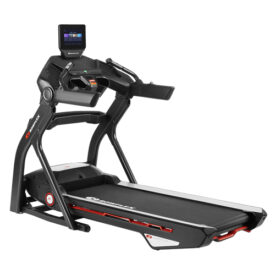
This treadmill features a foldable design, a 400-pound weight capacity, a wide range of incline and decline settings, and offers streaming capabilities.
Specs
- Price: $1,999
- Incline Range: -5-15%
- Max Speed: 12mph
- Motor Size: 4 HP
- Weight Capacity: 400lbs
- Product Dimensions: 85″ L x 39.6″ W x 65.3″ H
- Display Size: 10”
- Warranty: 15-year frame, 5-year mechanical parts, 2-year labor, 1-year electronics and HD touchscreen
Best Treadmill for Small Spaces: GoPlus 2-in-1 Folding Treadmill

This versatile treadmill can support walking and running workouts with speeds up to 7.5 miles per hour. An easy-to-use remote control puts you in control of your pace without hopping off the treadmill, too, which can be great for slowing down your strides for focusing on incoming emails or tasks.
Specs
- Price: $329.99
- Incline Range: N/A
- Max Speed: 7.5mph
- Motor Size: 2.25 HP
- Weight Capacity: 265lbs
- Product Dimensions: 55” L x 29” W x 5” H
- Display Size: Not listed
- Warranty: 90-day limited warranty
Best Treadmill for Running: ProForm Carbon Pro 9000

As a new treadmill silhouette for the ProForm stable, this Carbon Pro 9000 features a 16-inch HD touchscreen compatible with iFIT for trainer-led workouts. The 20-inch by 60-inch running deck and 3.6 CHP motor also lend themselves to high-intensity running endeavors, giving you the power and room to sprint comfortably through the end of your session.
Specs
- Price: $1,999
- Incline Range: 0-12%
- Max Speed: 12mph
- Motor Size: 3.6 CHP
- Weight Capacity: 350lbs
- Product Dimensions: 73.2” L x 34.6” W x 60.7” H
- Display Size: 16”
- Warranty: 10-year frame, 2-year motor, 2-year parts, 1-year tablet, 1-year labor and repairs
Best Cushioned Treadmill: Sole F80

The SOLE F80 treadmill is full of modern touches. It can withstand long runs, offers an incline range up to 15% and speed range up to 12 mph, and has a cushioned deck that makes running 40% less impactful on your joints than the outdoors.
pecs
- Price: $1,899.99
- Incline Range: 0-15%
- Max Speed: 12mph
- Motor Size: 3.5 HP
- Weight Capacity: 350lbs
- Product Dimensions: 82.5″ L x 38″ W x 66″ H
- Display Size: 10.1”
- Warranty: Lifetime frame, lifetime motor, 3-year deck, 3-year parts, 3-year wear items, 1-year labor, 90-day cosmetic items
Best Treadmill for Walking: Sunny Health & Fitness SF-T4400 Treadmill

This Sunny Health & Fitness treadmill is a steal at less than $400. It goes up to high speeds and even has some incline capabilities at an ultra-low price.
Specs
- Price: $499.99
- Incline Range: 0-4.3%
- Max Speed: 9mph
- Motor Size: 2.20 Peak HP
- Weight Capacity: 220lbs
- Product Dimensions: 62″ L x 25.5″ W x 50″ H
- Display Size: Not listed
- Warranty: 3-year frame, 180-day parts and components
Other Treadmills We Tested
While we only have 11 treadmills listed in this guide, we have tried many, many more. In total, our team tested more than 40 machines in researching this content. Here are a few others we tried out but felt they just missed the cut:
- Echelon Stride: Our team gave this machine an overall 4.3 out of 5. We really liked this treadmill, but we wish it had some more dynamic programming.
- Horizon 7.4 AT: We liked this machine but ultimately chose the 7.0 AT instead. Our team felt the footprint of this machine was pretty big and potentially inconvenient for home use.
How We Tested and Chose the Best Treadmills
The BarBend team is made up of competitive athletes, certified personal trainers, and lifelong fitness enthusiasts. We’ve had the pleasure of walking, jogging, and running on 41 top-performing treadmills. For this round-up, we drew upon that experience and utilized a multi-point equipment testing methodology to rate each chosen profile on a scale of 1 (lowest) to 5 (highest).
- Price: High-quality treads don’t have to cost a fortune. We’ve included examples of the best budget treadmills along with more expensive fitness equipment profiles delivering plenty of luxe features and amenities.
- Special Features: Some people are looking for cutting-edge tech, while others just want a machine that lets them run without a massive HD screen staring them in the face. Both types of treadmills are included in this list to satisfy all types of users.
- Build Quality: All of the treadmills on this list — even the budget options — feature high-quality construction with components such as steel frames, quality rubbers, powerful treadmill motors, and thicker plastics. Obviously, there will be differences in the frame build and deck durability based on the price range.
- Speed and Incline: To keep your treadmill sessions varied, it helps to have multiple speed and incline settings at your disposal. This can help you challenge yourself with new paces and pitches each workout, so we searched for treadmills capable of facilitating such setups.
- Equipment Footprint: A treadmill is essentially useless if it can fit within your training space. We included a variety of treadmills, from some of the best treadmills for apartments that measure less than your common loveseat to more massive profiles that can take up 23 square feet or more. (5)
- Workout Programming: We know some athletes love to follow classes or programs, whereas others don’t care much for dynamic programming. So, we offered a variety of machines with different tech options.
Benefits of Treadmills
According to Amanda Capritto, certified personal trainer and our expert reviewer, “Home treadmills offer the opportunity to run and walk in the comfort of your own home.” Naturally, there are plenty of perks that can come from this comfortable, convenient workout arrangement.
- Varied Training Intensities: Treadmills have no standard speed or intensity. While many picture treadmills as running-focused machines, there’s plenty of potential for lower-intensity workouts, like walking or jogging. After all, low-impact training can still have a positive effect on your cardiovascular health and quality of life. (1)
- Convenience: Capritto adds, “Treadmills can be particularly beneficial in situations in which walking and running outdoors isn’t safe, such as in bad weather or where there isn’t a pedestrian-friendly infrastructure.” While there are some benefits to running in the rain every now and then, we do admit that regularly training through temperate, covered settings can go a long way in helping you maintain training motivation.
- Accessibility: Combine the two features above (training intensity and convenience), and you’ve got a fairly accessible machine. Sure, the best commercial treadmills are likely readily available at your local gym, but with all the best folding treadmills and budget options out there, it can be even easier to have them in your own home.
What to Consider Before Buying a Treadmill
Regardless of whether you’re searching for the best treadmills on Amazon or digging through the category’s best brands to find the most luxe silhouette for your training space, there are a handful of factors worth considering before adding one of these cardio machines to your online cart. Read below to find out which categories we recommend thinking through prior to finalizing your purchase.
Space and Storage Considerations
One of the first questions you need to answer when purchasing a treadmill is how much space you have available to actually house your new machine. Amanda Capritto, certified personal trainer and BarBend expert reviewer, states, “Check the overall length, width, and height of the machine in its assembled position and folded position if applicable. And triple-measure your space to make sure it will fit!”

Once you have your floorplan decided, you can begin to search for your preferred silhouette. For example, most treadmills will do fine in a dedicated training space, but those working out in tighter quarters may want to focus on some of the best compact treadmills that can take up less space than your standard three-seat sofa. (5) If you are in need of a treadmill that can stow away in between sessions, we recommend opting for a foldable profile or, at least, a lightweight silhouette that can be easily maneuvered from one area to the next.
As for height, you’ll first want to measure the ceiling of the room where you plan to put your treadmill. According to the National Building Code, the standard ceiling height is 8 feet — anything under that could be considered a “low ceiling.” (7) Once you have that number, give yourself around 10 inches for the step-up height of the treadmill, and remember to take the height of the belt at its maximum incline into account.
Add up all of those numbers (along with your height) and give yourself an extra foot for some breathing room. If that number is less than the ceiling height of the room, you should be good to go.
You also want to make sure the running deck is big enough to allow you to stride naturally and get the most out of your workouts. After all, you don’t want to spend money on a treadmill only to realize that a shorter deck doesn’t allow you to run comfortably.
“A comfortable running deck for walking is 16 to 20 inches wide by 50 to 55 inches long,” Capritto says. “For running, and especially sprinting, you’ll want a deck of 20 inches wide by 60 inches long.”
Incline
To really get your heart going, you’ll want to look for a treadmill with an incline feature to mimic a variety of terrains. To get the model suited for your needs, there are a few specs to be aware of. Capritto says that budget-friendly treadmills typically have incline ranges between 3% and 9%. If you’re looking for more intense training options, more expensive models hover between 9% and 15%.
Setup, Assembly, and Noise Concerns
Your treadmill’s footprint is one thing, but it can also be wise to think about how your new machine is going to come together … and where. Consider the noise factor when deciding on your preferred training location, and whether you’ll need to accommodate other house dwellers as you tackle your daily step counts. Having this area in mind can be helpful when it comes time to assemble your tread, too, since the end products can often weigh over 100 pounds and aren’t the most travel-friendly pieces of workout equipment.
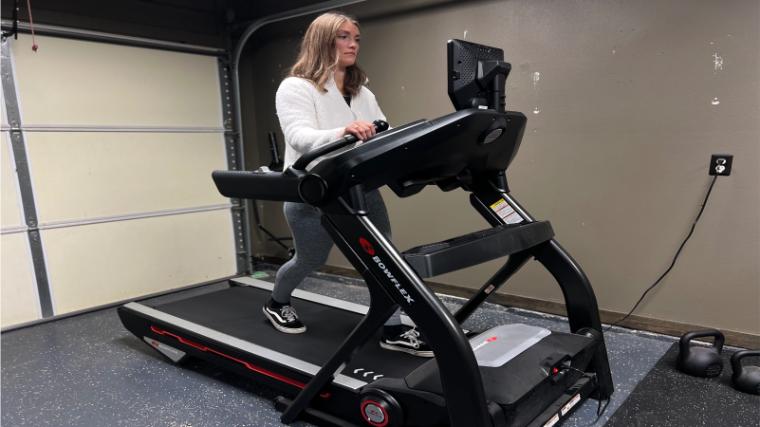
When it comes to assembly, most of today’s treadmills can be pieced together without professional help. Naturally, though, you may need a helping hand when trying to hold heavier components in place, so it can be wise to have assistance on hand if you’re uncomfortable. In terms of time, each build can be different — a safe bet is to hold aside a few hours for a standard treadmill, especially if you’re less skilled with hand tools.
Durability
You’ll definitely want to make sure your treadmill is built to last if you plan on spending a lot of money on it. A solid steel frame, sturdy deck, reversible belt, and a powerful motor are all aspects you want to note when looking for durability. The last thing you want is to drop thousands of dollars on a machine that doesn’t last longer than a couple of years.
Weight Capacity
While motor specs and belt dimensions can be helpful in telling you how durable your chosen treadmill is, an easier indicator can be your machine’s listed weight capacity.
“The industry standard for treadmill weight ratings is up to 300 pounds,” Capritto says. That said, we’ve tested some of the best treadmills for heavy people that can support totals up to 350 pounds or more. A higher weight capacity can often lend itself to a higher price tag, so be prepared to pay a premium for high-quality durability.
Cushioning and Shock Absorption
Anyone with joint pain should pay close attention to the cushioning on any treadmill they’re looking to buy, as Capritto warns that not every treadmill has a cushioned deck.
“A cushioned treadmill absorbs shock and relieves joint impact while walking, jogging, and running,” she says. “More cushion usually means more comfort, which can mean more running/walking and more health benefits.”
While there’s no real downside to getting a cushioned treadmill, it’s especially useful for people with achy joints or those looking to run or walk long distances most days of the week.
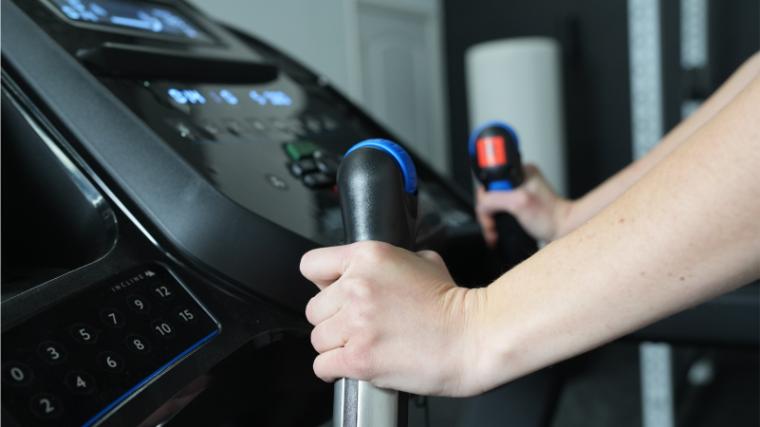
Training Capabilities
Training capabilities can also lend themselves to any available programming — do you want to follow along with some of the best workout apps powered by trainer-led instruction, or can you make do with a basic module tracking distance, speed, and calories burned? Be sure to find a suitable programming platform that’s aligned with your fitness goals.
Motor Power and Speed
Another important pre-purchase protocol is to consider which training features are right for your preferred workout routine. If you’re mainly using this new treadmill for running, Capritto recommends prioritizing motor size, saying, “Look for CHP (continuous horsepower) of at least 1.75 to 2.5 for walking. For running, you’ll need a more powerful motor with 2.75 to 4.0 CHP.”
When it comes to speed, Capritto says you want to look for treadmills that reach 10 to 12 miles per hour.
Tech & Features
Look, running can be a bit boring, right? The good thing is that plenty of treadmills have features to combat that, including TV screens and Bluetooth functionality. With the right tech on your treadmill, you can blast your favorite music, jog along a virtual trail, or just get some quality Netflix time during your daily cardio session.
Just make sure to take a real close look at the offerings before you make your purchase. Does any of the tech require a subscription? What about additional installation? Is the TV screen separate from the base model? Once you’ve got that figured out, it should be easy to find the model that fits your fitness preferences.
Additional Features
Treadmill features can be viewed as must-have safety components or luxurious conveniences. In the former category, a great treadmill safety tip is to seek out a profile with the following safety mechanisms:
- Treadmill safety key
- Handrails
- Panic button/kill switch
These can help you prevent unwanted injuries and keep you safe while operating the machine. If you do not see these components across your treadmill of choice, we recommend looking elsewhere.
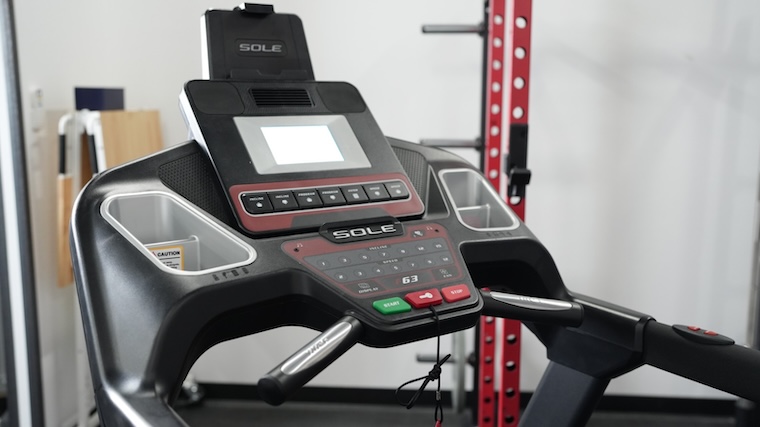
On the other end of the spectrum, conveniences can be great for maintaining a sense of comfort and enjoyment with your workouts. Add-ons such as built-in fans, water bottle holders, Bluetooth speakers, and more can be fun and useful mid-training, but aren’t necessarily going to make or break your performance. Be sure to weigh your needs and wants and try to find a silhouette that checks off as many of your boxes as possible without going over your budget. Speaking of…
Price
Of course, you’ll need to ensure that the treadmill you go with fits within your respective budget. You can find quality machines at an assortment of prices — from budget-friendly profiles costing $1,000 or less all the way up to luxurious models totaling $3,500 and above.
You also need to factor in any additional subscription services that may be required for optimal treadmill use. These memberships typically cost between $30 and $50 per month, so make sure you have room in your finances to support continued service throughout the year. Thankfully, many treadmills offer a 30-day trial period at initial purchase, so you can offset your potential investments for a little bit at the start.
Warranty
There’s no outrunning it — treadmills can be large expenses. As such, it can be helpful to choose a profile that’s supported by the brand through an extensive warranty package. “I recommend looking for 10 years on the frame, at least 2 years on parts, and at least 1 year for labor,” says Capritto, although these coverages can vary from brand to brand.
Treadmill Care and Maintenance
Like any large purchase, you can expect better performance from your treadmill if you actually take care of it. Regular cleaning and maintenance can help extend the lifespan of your machine, keeping your home gym operating at max potential for longer periods (and eliminating potential excuses to skip a session). Here are some basics to keep in mind.

Cleaning Your Treadmill
One of the easiest treadmill maintenance protocols is to regularly clean and inspect your treadmill. A quick wipe-down after each use can keep systems hygienic, and a weekly vacuum around the silhouette can help eliminate any clogged vents or potential friction areas. You should also get in the habit of checking bolts and screws for any loose ends.
Checking the Belt Alignment
Another common problem is issues with the treadmill’s belt alignment. These issues are easy to spot, as you may notice the belt has shifted to the right or left and/or looks visibly loose on the running deck. You can learn more about how to loosen or tighten the belt in this guide.
Lubricating Your Treadmill
You will also want to make sure you are lubricating your treadmill belt every three months in order for the equipment to operate smoothly and avoid deterioration. Thankfully, treadmill lubricants are easy to find, and the maintenance is simple enough to do on your own. Head here for a primer on how to lubricate your treadmill.
Other maintenance specific to your treadmill brand may be necessary, but this additional information should be housed in your machine’s user manual.
Treadmill Safety Tips
Though treadmills are generally safe, they can pose a risk if you aren’t using them properly. To help you avoid any accidents, we’ve put together a few treadmill safety tips you should know about.
- Always read the manual: This one sounds obvious, but how many times have you completely ignored the manual on a new piece of equipment? A treadmill’s owner’s manual will help you get familiarized with the machine, clueing you in on safety precautions the company wants you to be aware of and maintenance tips to follow.
- Keep your head up! Don’t look down while running or walking on a treadmill. Keeping your head up and your eyes focused on a fixed point can help you maintain your balance and prevent falls.
- Start slow: Even experienced runners should gradually increase speed on a treadmill during a workout. Making the belt go too fast too quickly can cause you to lose your balance.
- Don’t step off until the belt stops: Once you’ve finished your workout, reduce the speed gradually and step off the treadmill once the belt has completely stopped to avoid falls.
- Familiarize yourself with the buttons: Before you really start working out on your new treadmill, make sure you know what all of the buttons do and where they are located. This is especially important if your treadmill has an emergency stop button, since those will cause the treadmill belt to immediately halt when pressed. Trust us: You do not want to confuse the emergency stop button with the cooldown button, so it’s important to become familiar with your treadmill’s dashboard.
- Keep pets and kids off: If possible, keep your treadmill in a locked room and unplugged so kids and pets can’t accidentally turn it on and potentially get injured. While treadmills are generally safe if you know how to use them, they can pose a danger to children and animals. Read more about the dangers of treadmills here, and learn how to reduce the risk in your own home.
How Much Do the Best Treadmills Cost?
Treadmills can vary pretty widely in price. While you can find durable, long-lasting machines for only a couple of hundred dollars, there are high-tech, heavy-duty units that cost thousands of dollars. Use the chart below to compare costs across machines.
| Best Treadmill Overall | Horizon 7.0 AT | $2,100 |
| Best Treadmill for Streaming | NordicTrack Commercial 1750 | $2,499 |
| Best Folding Treadmill | Sole F63 | $1,299.99 |
| Best Budget Treadmill | Horizon T101 | $999 |
| Best Incline Treadmill | NordicTrack X24 | $3,999 |
| Best Manual Treadmill | TrueForm Trainer Curved Treadmill | $3,999 |
| Most Durable Treadmill | BowFlex Treadmill 10 | $1,999 |
| Best Treadmill for Small Spaces | GoPlus 2-in-1 Folding Treadmill | $329.99 |
| Best Treadmill for Running | ProForm Carbon Pro 9000 | $1,999 |
| Best Cushioned Treadmill | Sole F80 | $1,899.99 |
| Best Treadmill for Walking | Sunny Health & Fitness SF-T4400 | $499.99 |
Best Treadmills FAQs
How much do treadmills cost?
High-quality treadmills can range in price from around $1,000 for a budget version up to $3,000 to $5,000 for those with lots of tech and features. We’ve included a wide range of treadmills varying in price on our list to accommodate nearly anyone’s budget.
Are treadmills worth it?
Yes, treadmills can be excellent additions to your home gym, but they aren’t the wisest investment if your workout regimen doesn’t include walking, jogging, or running. If you primarily take part in resistance training or prefer a lower-impact cardio discipline like rowing or elliptical training, it may be best to look elsewhere.
What are the most reliable treadmill brands?
This can be a subjective matter, but in our experience, we’ve routinely seen treadmills from brands such as NordicTrack, Sole, and ProForm rank highly within our testing methodologies. You’ll find profiles from these brands on a plethora of our treadmill-related content, and we’re happy to recommend them for your personal training space.
References
- Rippe, J. M., Ward, A., Porcari, J. P., & Freedson, P. S. (1988). Walking for health and fitness. JAMA, 259(18), 2720–2724.
- Chan, L., Chin, L. M. K., Kennedy, M., Woolstenhulme, J. G., Nathan, S. D., Weinstein, A. A., Connors, G., Weir, N. A., Drinkard, B., Lamberti, J., & Keyser, R. E. (2013). Benefits of intensive treadmill exercise training on cardiorespiratory function and quality of life in patients with pulmonary hypertension. Chest, 143(2), 333–343.
- Hatchett, A., Armstrong, K., Parr, B., Crews, M., & Tant, C. (2018). The effect of a curved non-motorized treadmill on running gait length, imbalance and Stride Angle. Sports, 6(3), 58.
- Carreiro, A. (2023, October 31). Treadmill Buying Guide: The Full Rundown on what to look for | time stamped. Time. https://time.com/shopping/article/treadmill-buying-guide/
- Jaramillo, C. (2022, December 29). A guide to sofa dimensions & sizes. SeatUp, LLC. https://seatup.com/blog/guide-to-sofa-dimensions/
- Ferley, D. D., Osborn, R. W., & Vukovich, M. D. (2014). The effects of incline and level-grade high-intensity interval treadmill training on running economy and muscle power in well-trained distance runners. Journal of Strength and Conditioning Research, 28(5), 1298–1309. https://pubmed.ncbi.nlm.nih.gov/24172721/
- Rybczynski, W. (n.d.). Ceiling Heights in Homes and Offices. Ceiling Heights in homes and offices – Zell/Lurie Real Estate Center. https://realestate.wharton.upenn.edu/working-papers/ceiling-heights-in-homes-and-offices/









